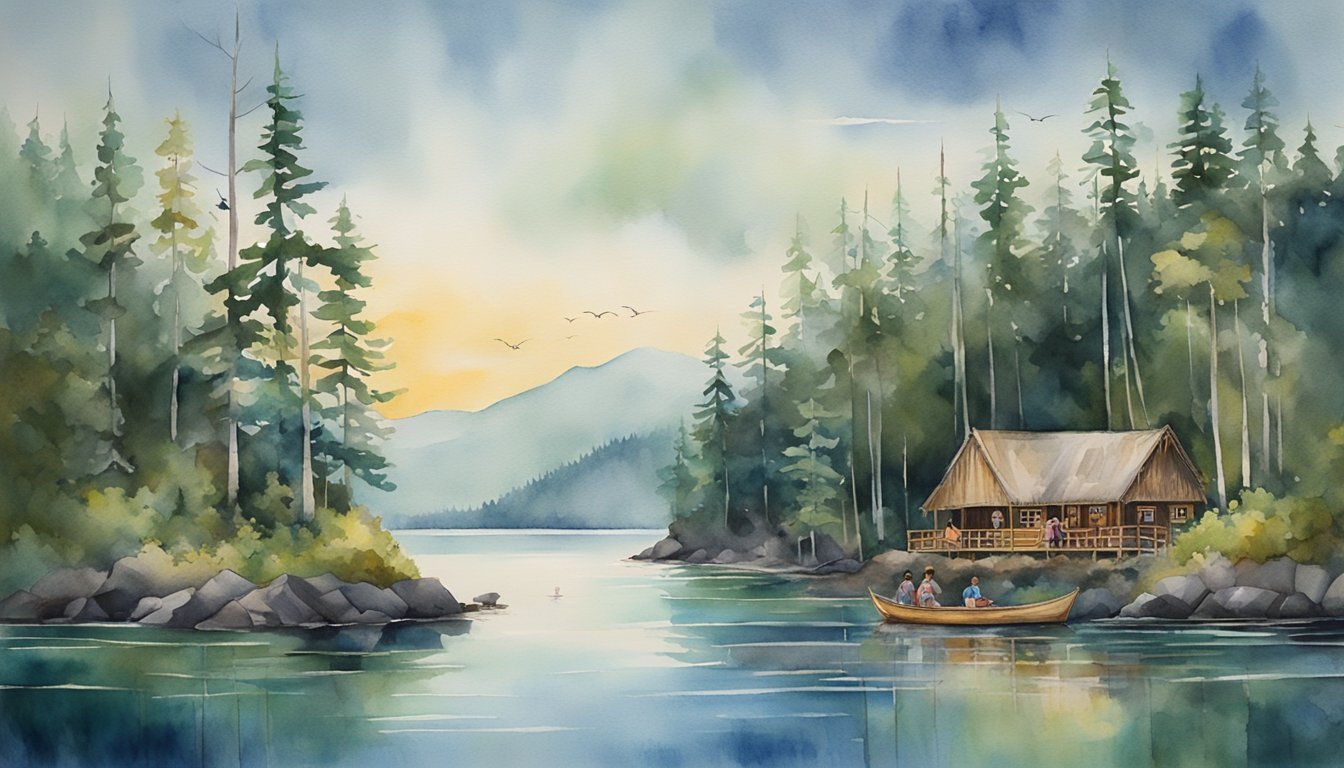Geography and Culture of the Northwest Coast

The Northwest Coast region is a vibrant tapestry of physical features and cultural heritage, stretching from California to Alaska and bounded by the dynamic Pacific Ocean.
Physical Geography and Climate
The Northwest Coast features a dramatic coastline with rugged cliffs and expansive beaches. The area is flanked by dense temperate rainforests and towering mountain ranges, including the Coast Range and the Olympic Peninsula. The climate is predominantly maritime, with moist and mild conditions year-round, leading to the lush biodiversity of both plant and animal life.
Native American Tribes
Home to an array of indigenous groups such as the Tlingit, Haida, Nuu-chah-nulth, Tsimshian, and Coast Salish, this region’s social fabric is as complex as its ecosystems. These tribes are renowned for their rich traditions, including intricate art, totem pole carving, and community feasts known as potlatches, that reflect a profound connection with the land and sea.
European Contact and Influence
European exploration drastically altered the Northwest Coast. Contact with French, Spanish, and especially English explorers in the 18th century introduced new trade dynamics, diseases, and cultural exchanges that had profound effects on the native populations. This period also marked the beginning of European settlement and resource exploitation.
Contemporary Life and Tourism
Today, while modernity has transformed many aspects of life in the region, a strong emphasis is placed on cultural preservation and environmental stewardship. Tourism thrives, supported by natural splendors such as Vancouver Island and the many national parks that offer a window into the region’s storied past. Native American festivals and museums offer insight into the enduring legacies of the Northwest Coast’s original inhabitants.
Arts, Economy, and Ecosystem

The intersection of art, economy, and ecosystem on the Northwest Coast creates a tapestry of cultural significance and ecological importance. From the artistic expressions captured in totem poles to the reliance on natural resources for sustenance, these aspects are crucial to the understanding of the region.
Northwest Coast Art and Totem Poles
The Pacific Northwest is renowned for its rich artistic traditions, particularly the creation of totem poles, which are deeply emblematic of the cultures that make up this vibrant area. Crafted from the region’s abundant cedar and spruce, these towering structures tell the stories of clans and history through intricate carvings. Totem poles serve as both sacred objects and as a means of passing down lore and legend. Artists from the Haida Gwaii and along the Yukon have gained global recognition, with pieces that showcase the distinct eye motif, a hallmark of the Tlingit anthropologist Louis Shotridge’s descriptions, as found in the archives of Smarthistory.
Natural Resources and Sustenance
The Pacific Northwest Coast’s abundant natural resources have long supported the region’s people. The waters here are rich with Chinook salmon and oysters, providing critical sustenance and forming the backbone of the local economy. Communities have thrived through a deep connection to the environment, where the practice of taking has gradually shifted towards one of tending the land and engaging in sustainable practices, as detailed in studies noted on ICES.
Wildlife and Conservation
Environmental efforts on the Northwest Coast play a significant role in safeguarding a diverse array of wildlife, including various bear species that depend on the region’s ecosystems. Conservation practices have become increasingly important, aiming to maintain the delicate balance between human activities and the natural habitats that are necessary for the survival of these species. Engaging with indigenous knowledge and stewardship principles is crucial in these endeavors, such as those discussed in academic pieces from the University of Chicago Press.

